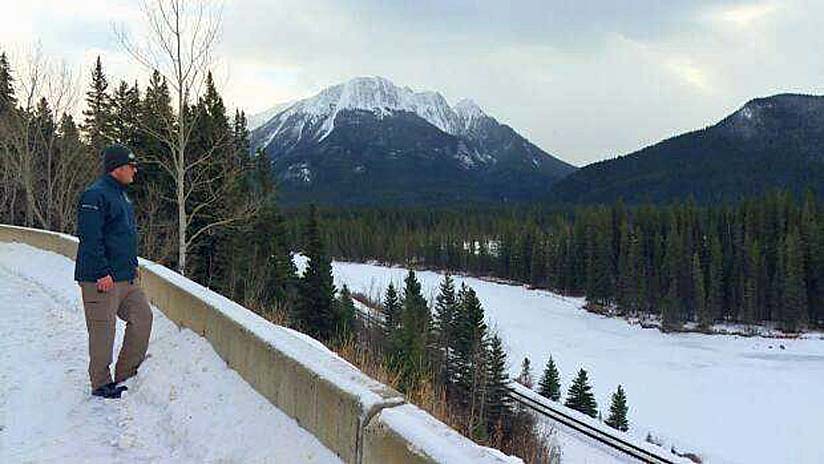
Banff Alberta - A pilot project in Banff National Park that is using escape trails and other spaces cut along a rail line to reduce
wildlife mortality rates is showing promise, Parks Canada says.
Researchers are two years into a five year project with an objective to find ways to reduce wildlife deaths along the train tracks.
West of the Banff townsite, where the tracks curve through thick forests and steep hills, they have cut about 38 kilometres of trail off the rail line, and
others that run parallel to it.
The idea, park officials say, is to provide wildlife with potential escape routes from trains, and a network of alternative pathways through the
area.
"You have to recognize that they will select to use the rail at times, so what we are trying to do here is to reduce the probability that they'll get
struck. So we're giving them options off the rail, to travel outside of the rail corridor, and as well as giving them a higher success rate of leaving the rail
under duress," Parks Canada Resource Management officer Dave Garrow said.
Cameras Show Wildlife Moving Off Tracks
The areas where the trails have been cut include rough terrain and other features that mean fewer route options for animals, park officials said.
The behaviour of the wildlife, and their use of the trails, are being monitored by trail cameras that have captured a variety of animals using the parallel
paths in the area, and some to escape passing trains.
Parks Canada Resource Conservation Manager Bill Hunt told CBC News that though it is still early for the project, the initial results are
promising.
"Our sample sizes aren't large enough yet to get significant results, but the initial results are showing that wildlife are using the parallel trails once
we clear them out. We're starting to see quite a bit of additional wildlife use there," Hunt said.
"We're seeing camera images showing wildlife coming off the railway, sometimes under duress leaving the railway tracks, so that's encouraging to see
those."
And because the strategy has minimal impact on rail operations, and is relatively low maintenance, it could eventually be replicated along other sections of
the railway if it works, park officials said.
Pilot Project Backed by Years of Research
The project is one of the wildlife management initiatives to come out of a recent study involving Parks Canada and the University of Alberta looking at
wildlife deaths on railway tracks.
It examined 646 wildlife deaths on railway tracks in Banff and Yoho national parks in Alberta and British Columbia between 1995 and 2018: 59 bears, 27 wolves,
coyotes, cougars, lynx, and 560 deer, elk, moose and sheep.
"The top predictor was train speed. Next was distance to water, then the amount of water near the site, and then curvature in the tracks," said lead
author Colleen Cassady St. Clair, a biological sciences professor at the University of Alberta.
Train speed and track curvature, she said, make it difficult for wildlife to detect trains, while being close to water hinders their ability to get off the
tracks before being hit.
The study was published in Nature's Scientific Reports in November of 2020, and built upon a five year research project funded by Parks Canada and Canadian
Pacific Railway from 2010 to 2015 that focused on grizzly bears being struck by trains in the same two parks.
It concluded that giving grizzlies better travel paths and sight lines along the railway was the best way to keep them safe.
Author unknown.
(because there was no image with original article)
(usually because it's been seen before)
provisions in Section 29 of the Canadian
Copyright Modernization Act.

